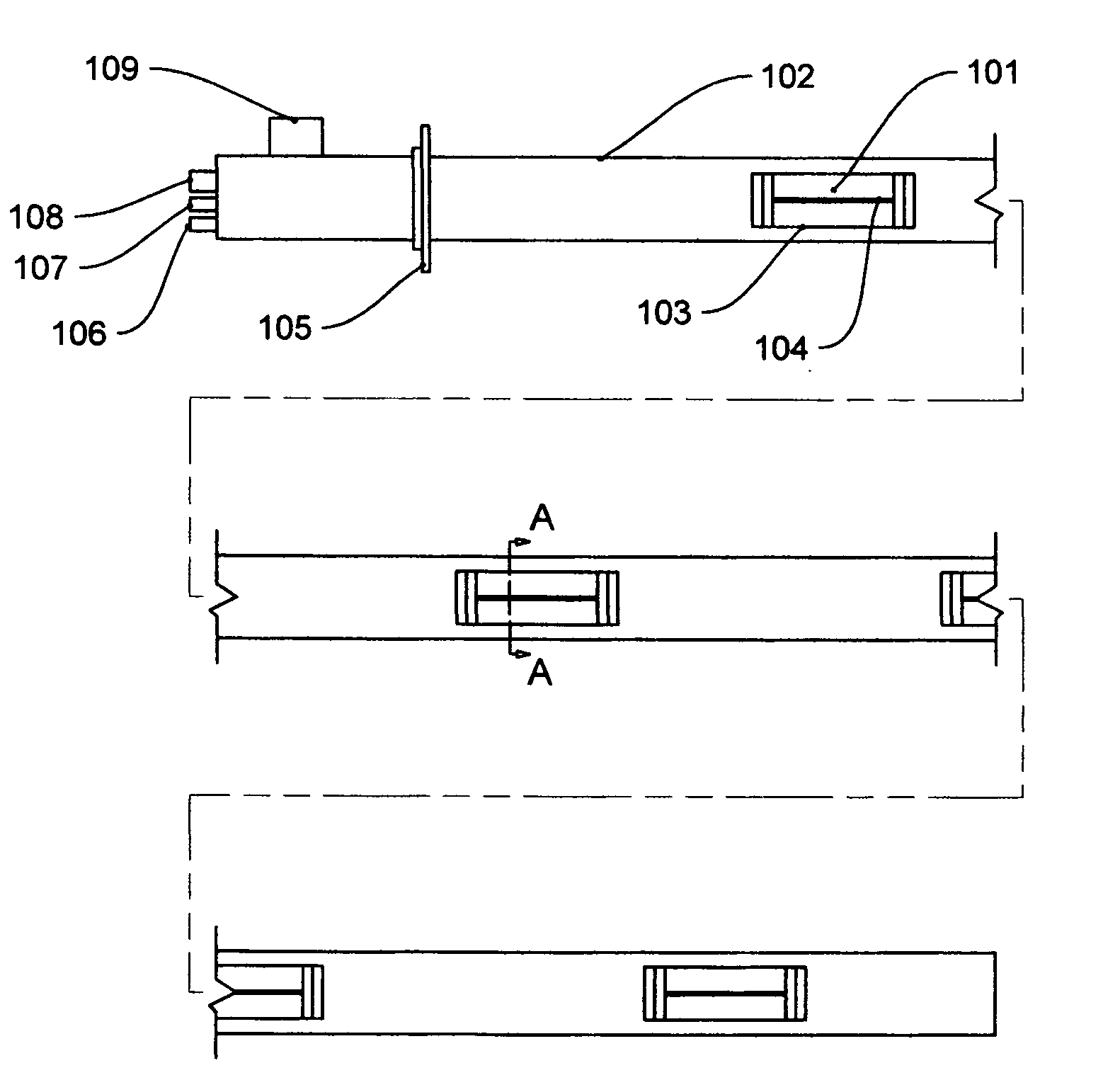Joining the mixing and variable gas atomizing of reactive chemicals in flue gas cleaning systems for removal of sulfur oxides, nitrogen oxides and mercury
- Summary
- Abstract
- Description
- Claims
- Application Information
AI Technical Summary
Benefits of technology
Problems solved by technology
Method used
Image
Examples
Embodiment Construction
[0036]FIG. 1 illustrates a typical VGA nozzle-lance as assembled for installation in a flue gas duct and as utilized with injection of dry hydrated lime for SO2 capture. It is described herein by specific reference to FIG. 1. For the purpose of illustrating its length, typically about 20 ft., but generally ranging from the order of 10-30 ft., it is shown cut into three sections. Linear nozzles, 101 are located at suitable intervals within cylindrical tube / pipe lance 102 having rectangular windows 103 through which atomized spray issues from linear slits 104. Although, the illustration shows four nozzles, the number of nozzles and nozzle spacing may be varied to suit the flue gas duct size and capacity, with a general maximum of six nozzles per lance for uniformity of spray volume across a duct. The lance is fitted with pipe flange 105 for insertion through a duct wall. The inlet end is fitted with pipe fittings such as 106 for water feed, 107 for compressed, atomizing air, 108 for s...
PUM
| Property | Measurement | Unit |
|---|---|---|
| Length | aaaaa | aaaaa |
| Length | aaaaa | aaaaa |
| Length | aaaaa | aaaaa |
Abstract
Description
Claims
Application Information
 Login to View More
Login to View More - R&D
- Intellectual Property
- Life Sciences
- Materials
- Tech Scout
- Unparalleled Data Quality
- Higher Quality Content
- 60% Fewer Hallucinations
Browse by: Latest US Patents, China's latest patents, Technical Efficacy Thesaurus, Application Domain, Technology Topic, Popular Technical Reports.
© 2025 PatSnap. All rights reserved.Legal|Privacy policy|Modern Slavery Act Transparency Statement|Sitemap|About US| Contact US: help@patsnap.com



